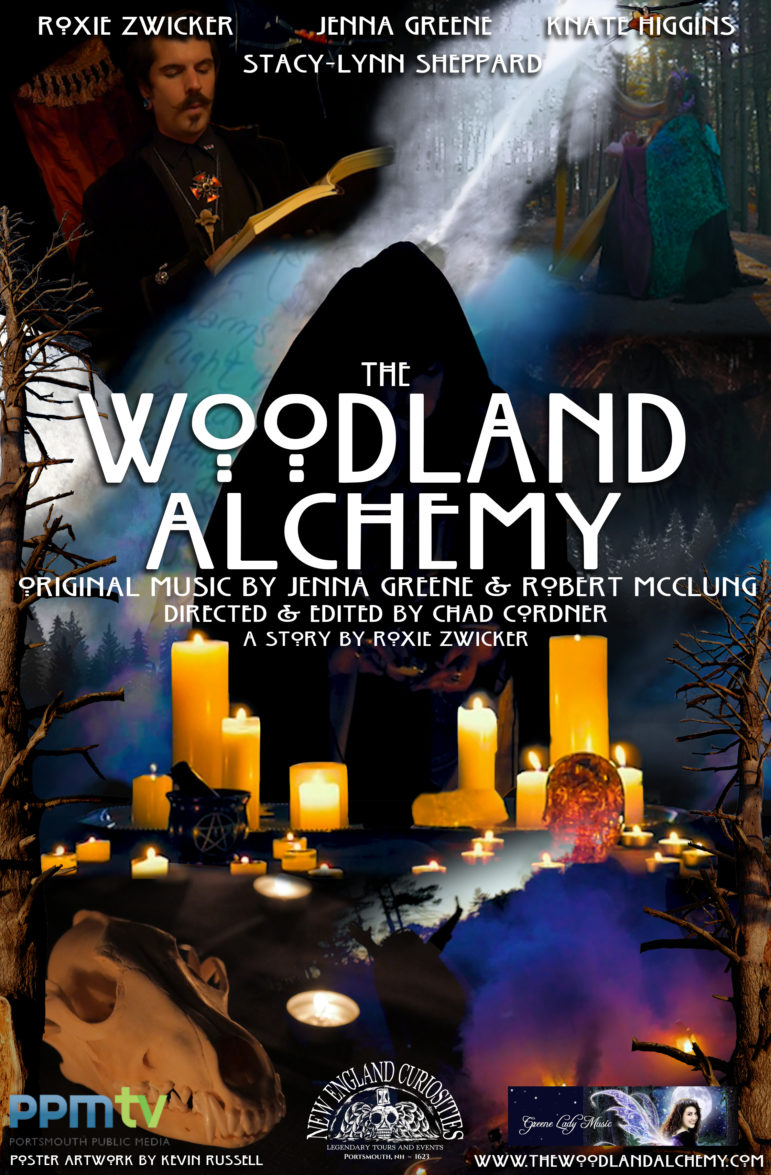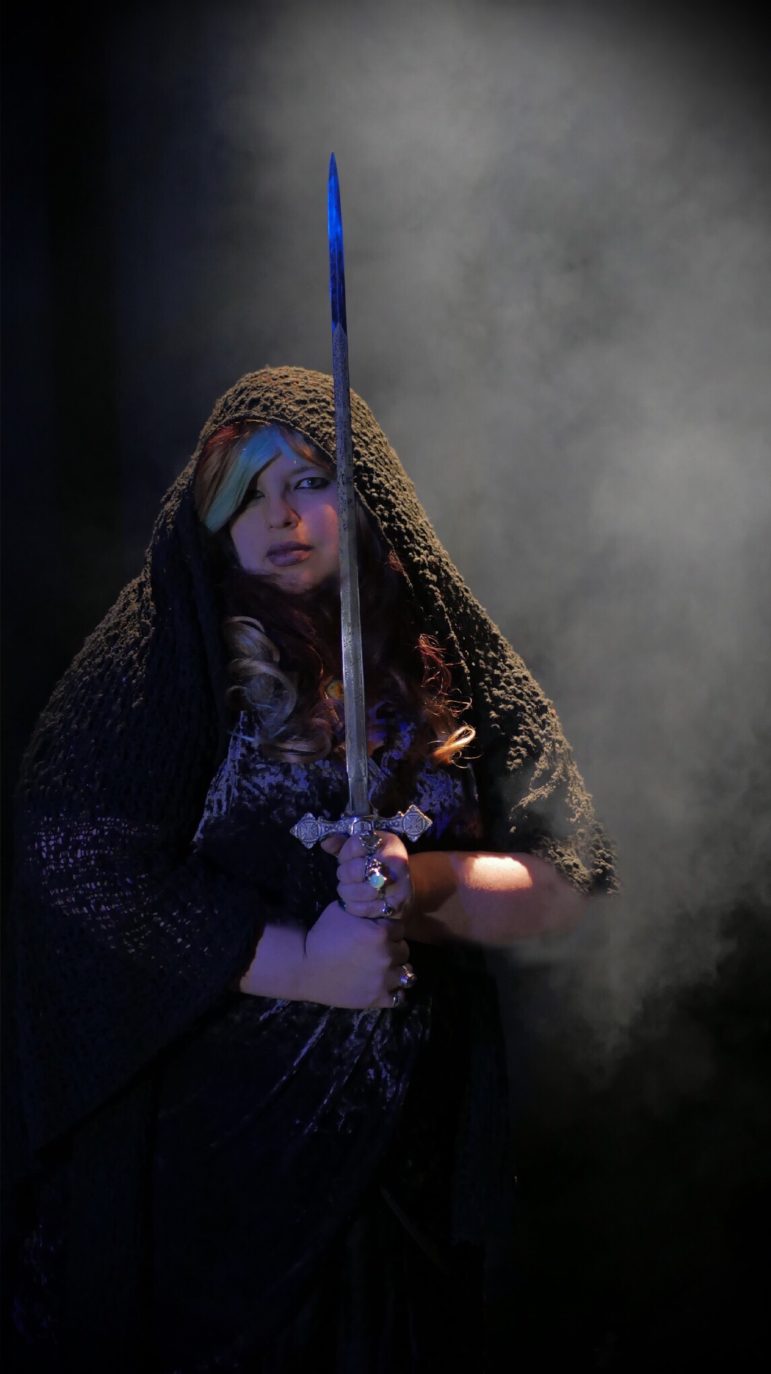BALTIMORE (TWH) – Witches and Witchcraft have long had a place in popular culture. Throughout history, images of Witches have been used to capture the imagination and intrigue audiences. They can be found in nearly every culture. It has produced the kind of fear that has inspired panic and prejudice, inducing societies to persecute people who happened to be witches or even individuals wrongly accused of the practice.
“We realize our history and heritage,” said Roxie Zwicker, a self-described, “Tarot and Oracle Card Reader, Workshop Circle Facilitator, and Spiritual Advisor” who lives in Portsmouth, NH, in an interview with WBUR in Boston. “People were condemned for witchcraft all over New England.”

[Courtesy]
“We’ve always as a religious movement struggled with the enduring popularity of the Hallowe’en witch,” said H. Byron Ballard, Asheville, NC’s Village Witch. “That image has endured far longer than either the Wiccan-style witch or the herb woman.”
She noted that the word, “witch”, is problematic in and of itself.
“Witches are generally seen as malevolent and not the same as healers [in many cultures].”
Heather Greene, author of Bell, Book, and Camera: A Critical History of Witches in American Film and Television on how the depictions of Witches have changed in popular culture, and movies:
“That is actually the question that I asked before beginning research for my book. Witch portrayals have changed significantly, and I wanted to know why. The main reason behind the shift in witch construction in American television and film is due to the shifts in gender politics, attitudes toward sexuality, and the changing roles of women in our society.”
The creators of recent productions, from Disney films, “Brave”, “Coco”, and “Moana,” to Netflix’s, “The Chilling Adventures of Sabrina”, do seem to have at least attempted to portray Witchcraft, magic(k), and Paganism in general, in a more realistic, often positive light though to mixed success.
Regardeless, Zwicker can now add, “Filmmaker”, to her list of credentials. She wrote and co-stars in a new film, “The Woodland Alchemy,” that made its Boston premier at the Boston Sci-Fi Film Fest earlier this month. She also served as the film’s executive producer.

Roxie Zwicker with fellow cast and crew members [courtesy R. Zwicker]
In “The Woodland Alchemy”, Zwicker has created a portrayal of witches and witchcraft that accurately illustrates who witches are and how they actually practice their Craft.
“In thinking about how the film came about initially, I realized that it had to be authentic,” said Zwicker. “A friend of mine who I had worked with on previous projects asked if I would be interested in going out to the woods with my, ‘witchy friends’, and do some filming. He had been expecting something scary, but in thinking about it as we led up to the shoot, I realized I didn’t want to encourage that stereotype.”

[courtesy R. Zwicker]
Zwicker described the evolution of the project as a process involving the confluence of her personal practices, a beautiful natural setting that, “spoke to me as well to be true to who I am”, and an original piece of music written specifically for the film.
“My thoughts were stirred when the word, ‘Alchemy’, became part of the project,” said Zwicker. “The concepts of working with the light, shadow, and balance are ones that most everyone–Witch or non-witch–deals with. We all hide things in our shadow, we are all trying to walk in balance within ourselves and on the earth. So at the film’s core I knew that there was this commonality. When I describe the idea of, ‘who hasn’t gone to the beach or the woods to re-calibrate and find themselves’, that’s a connection which we all share.”
These were ideas that she felt other films to date have failed to capture. “I had not seen these concepts truly shown in a film before,” she said, “and I felt that this was our opportunity.”
Greene offers a rundown on how these shifts have occurred, “In the earliest witch films, witches were often depicted without judgement. They were crones in the woods that would both help or hinder a hero (e.g, Mysteries of Myra, 1916; Cinderella, 1914). They were not bad or good; they were fantasy witches who just did their magical thing.
“…as Hollywood moved into its censored golden years, witches and witchcraft were predominantly depicted as bad, evil, or in later years, as just plain weird. Most of these films and shows do not present any nuanced dynamic within a character that accepts both evil and good, or shadow and light. They are one or they must choose one (e.g. Weird Woman, 1944; Make Me Not A Witch, 1959).
“However that does change by the 1990s. TV’s Buffy the Vampire Slayer‘s Willow is one of the first witches to deal with that issue, and this inner crisis of ethics and conscience was seen briefly in The Craft (1996). We see the struggle for balance again very concretely in Beautiful Creatures (2013), which actually presents that very dilemma. This idea is now a large part of our pop cultural conversations, even outside of Witchcraft constructions, and can be seen in shows like American Horror Story: Coven, in the film Disney’s Maleficent (2014), and most recently in the new Netflix show based on Sabrina the Teenage Witch.”
Some in the Witch community welcome the change. “I have seen everything [in movies or on television] from the outsider teenage groups to witches that allegedly eat children,” said Raina Starr, co-creator and co-host of the irreverent Desperate Housewitches podcast.
Starr, a self-described kitchen Witch, is serious about her work but is not afraid to have some fun with the popular imagery and trappings prevalent in today’s media. She does find many portrayals of, and underlying prejudice against, Witches problematic but does not allow herself to be offended by every perceived slight she comes across.
“Look, all honor to the Gods,” she said, “but can’t we just relax a little? We can get our panties in a bunch over every little thing, or we can focus on more important things.”
“I see Witches portrayed in all sorts of guises in popular media and television,” observed Jason Mankey, author of “Transformational Witchcraft” and many other books about Witchcraft and Paganism.
“The most popular trope still tends to be Witches having some sort of connection to Salem and the Devil. But all of that’s OK. We don’t own the word, ‘witch’, and self-identifying as a Witch requires accepting that it will be used in a variety of ways and that we may not love all of them.”
Acceptance of these realities does not mean that Witches do not stand up for themselves when threatened or subjected to disrespect that goes beyond bothersome but, arguably, innocent ignorance. The questions are, what is to be done about it–both as a community and as individuals? How can public perception of Witches and Witchcraft be changed?
Greene’s take on how much impact movies have, “Honestly, at this point, most films have little effect on the broader Pagan world because most of them are fantasy and the general population is far more aware of modern Pagan practices. In the late 1980s, there was a rash of films that depicted witchcraft as wholly evil and Satanic, which did cause issues. This was also a time when the community was just emerging into the public eye, and probably being forced to in part by this wave of Witchcraft films. Today, that is not the case. Moreover, one reality is that the word witch is culturally bigger than us, and we just own a piece of it.”
Zwicker noted the importance of witch-related media that is produced by witches themselves. “There are so many films about witches where it seems as though the choice to take it to a dark or sensational place is the objective,” she said. “Personally, I am intrigued by the number of films and projects that are in the media today that are about Witches, yet not written or produced by them.”
Zwicker went on to describe what she feels her role is as a Witch and teacher. “In the work I do, my feelings are that there is a responsibility to share what witches are and aren’t. The film presents the concepts of ritual magic in a way that is organic and emotional. Nearly everyone involved with the project was going through intense life changes, so it was cathartic for us too.”
“Cathartic”, is a good word to use when discussing how individuals deal with the effects of media misrepresentations and appropriations of Witchcraft. Most reasonable people would agree that stereotyping, however benign on the surface, is a form of bigotry.
Today’s Witches have choices in how they go about combating that ignorance. Some react with anger, others with despair. However, many Witches choose to respond to prejudice and misconception by directly engaging the world.
“The only way to change any perception is to present your best self in all aspects, as your mother would expect you to do with any stranger,” said Starr. “Maybe it’s because I’m older, but when you get to a certain point, it becomes more important to pick your battles.”
Greene points out that current proposed legal shifts may be more problematic than how Witches might be depicted and perceived, “In today’s world, I believe that modern Pagans are hurt far more by real life challenges to religious freedom laws than Hollywood presentations.”
Films like Zwicker’s, “The Woodland Alchemy”, are an important part of that outreach effort. The trailer is beautiful in and of itself and leaves the viewer with the feeling that they are about to experience the real deal.
“It’s already been a fascinating journey for the film,” said Zwicker, “I really think that it has taken on a life of its own. There is a magic between all of the creative minds behind the film and it seems to be reflected in all facets of the project.”
That kind of magic can go a long way toward breaking some of those stereotypes.
“In reviewing the first bit of footage there was an energy that was captured in the shots and so many, ‘unexplainable’, magic moments unfolded,” said Zwicker. “Everything that happened early on in the project confirmed that this was going to have a broader reach than even we anticipated.”
The Wild Hunt is not responsible for links to external content.
To join a conversation on this post:
Visit our The Wild Hunt subreddit! Point your favorite browser to https://www.reddit.com/r/The_Wild_Hunt_News/, then click “JOIN”. Make sure to click the bell, too, to be notified of new articles posted to our subreddit.